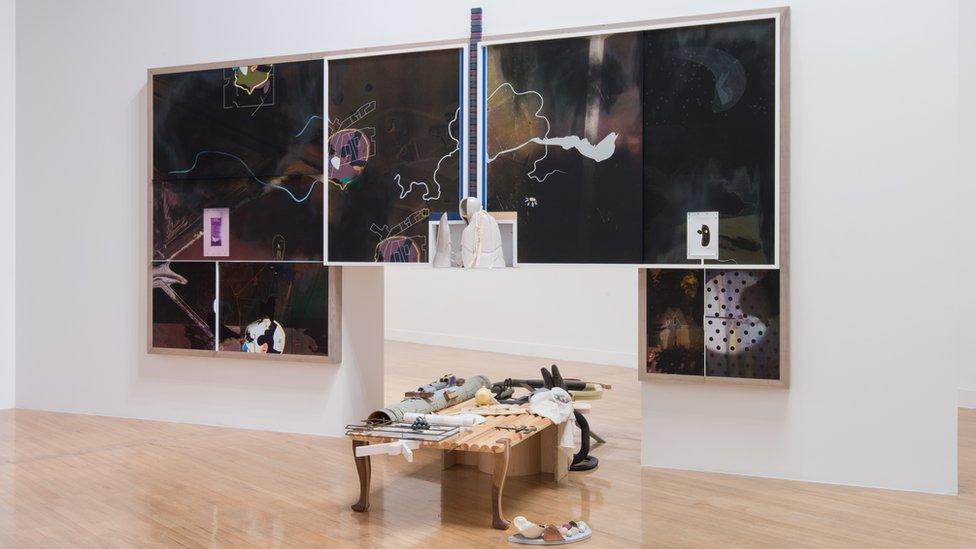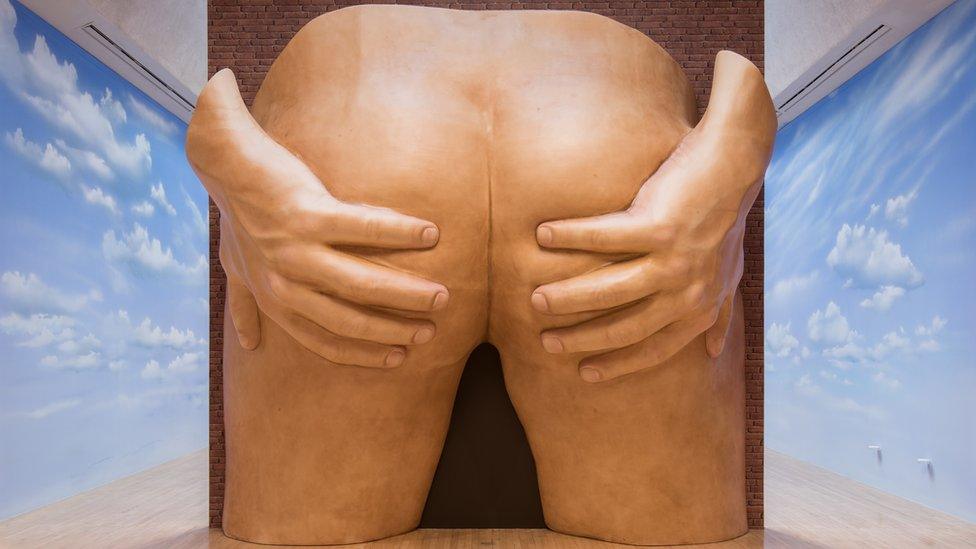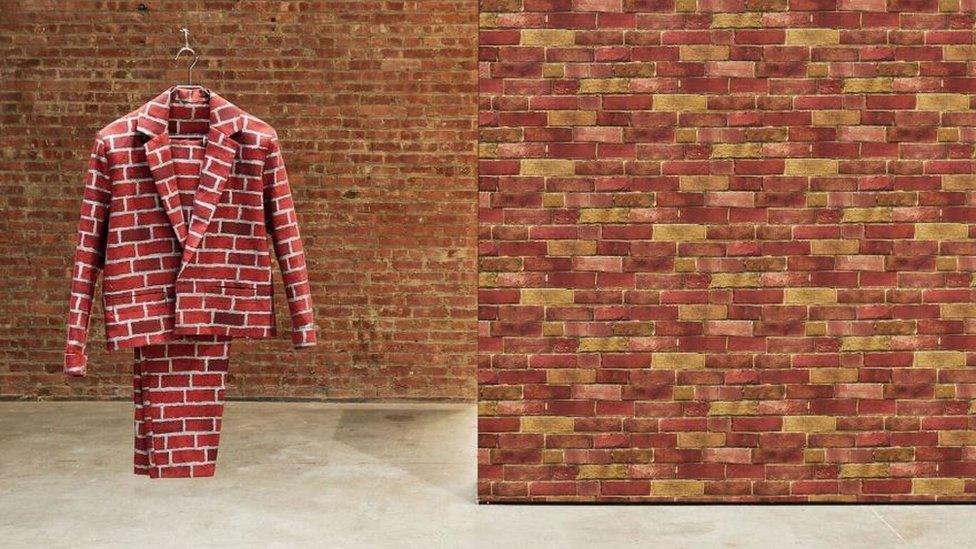Turner Prize: What defines a good work of art?
- Published

Helen Marten's work creates "time capsule stories containing an arrangement of clues that help the viewer solve a riddle"
I like the broadcaster Nihal Arthanayake. He poses good questions. Like the one he asked me this afternoon on BBC Radio 5 live.
We were talking about the Turner Prize, external, which can inspire "call that art" type cynicism. But he didn't go down that route. He asked me which of the four artists had moved me most with their work. Nice one Nihal.
That's the thing to ask: it is what defines a good work of art.
You can appreciate pretty much anything if you intellectualise it - even those really dire videos you try to sit through in galleries. But not every work touches your emotions and makes you feel something.
That's the starting point for me. Three of the four artists had that effect on me to varying degrees. Only Josephine Pryde left me cold, which is a purely my subjective experience, others might find her display of photographs and a model railway an emotional knock out.

Anthea Hamilton's work combines surrealism, comedy and sexual imagery
I think it is impossible not to be amused by Anthea Hamilton's installation. The huge bottom will get the headlines and the picture spreads - and it is fun - but I preferred the other half of her exhibit, which places you on the edge of a her balcony on a summer's day in London looking out at a blue sky dotted with white clouds.
To this happy-smiley environment she has added five chastity belts strung across the room as if hanging out to dry on a washing line. It's weird and surreal and amusing. Unlike Michael Dean's room, which is troubled and complex and uncomfortable.
His work moved me a lot. His elongated sculptures might be rickety and awkward, but they pack a punch. Maybe it's because they represent words and letters and that enables them to somehow they communicate without the viewer (at least, me) realising. Or perhaps it's their formal arrangement and the way they affect the space.
The 20,436 1p coins he has spread around the room are also moving, although in a less subtle way. One penny is then removed by the artist, bringing the number below the poverty line.
They represent the official poverty line in the UK for a family of four, which is represented by four tombstone-like objects who - I am told - are the artist, his missus and two children.
He was going to be my answer to Nihal's question but I paused for a moment and nominated Helen Marten instead.
'Time capsule stories'
She is a sculptor too, making her work with a variety of materials both found and fabricated. With these she creates small tableaus that contain the evidence of what went on before.
They are sort of time capsule stories containing an arrangement of clues that help the viewer solve a riddle - or, perhaps, make up his or her own story.
I found the way into her complicated mind is to simply enjoy the quality of the materials she has used and the way they have been put together, often by the artist but not always. The joinery, for instance, is top quality - a return to arts and crafts maybe?
Getting into the work pays dividends, though - the puzzles bear scrutiny: they are good - moving, even.
- Published26 September 2016
